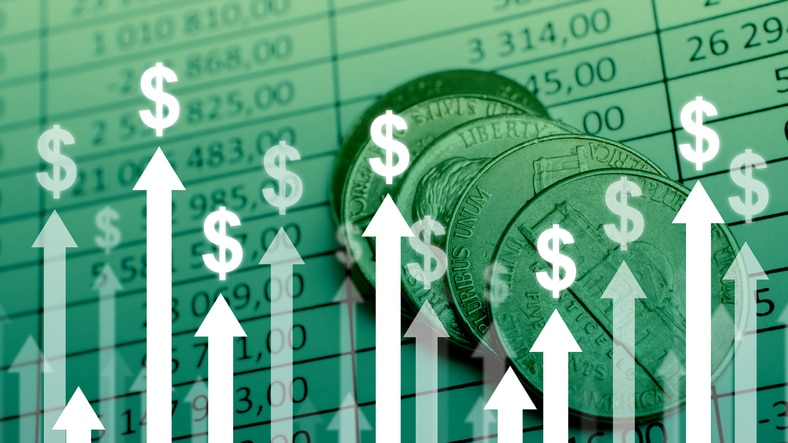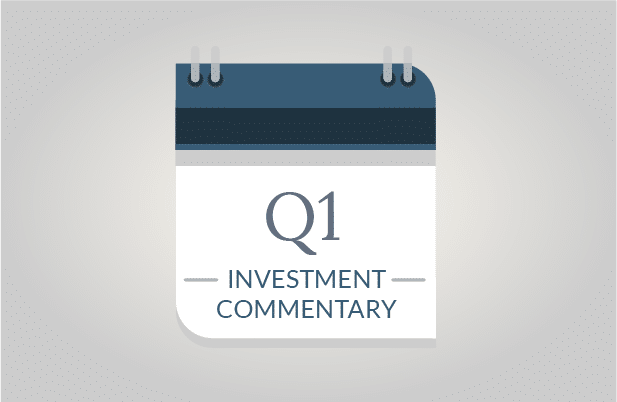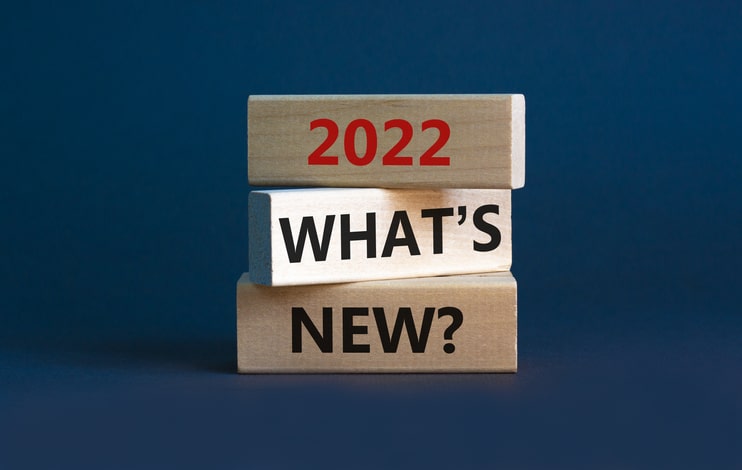Anyone who has made a purchase recently, from gas to groceries, has felt the effects of the current inflation spike. Unfortunately, even investments have not been spared. Many people are understandably concerned about their portfolios and the rising costs of daily life. While the current impacts are real and unpleasant, we believe it’s important to recognize that historical trends suggest we will recover, and some current data is encouraging.
The Current Inflationary Environment
Inflation may not be as transitory as the Fed once thought. The conflict in Ukraine, Chinese lockdowns, as well as global disruption to energy sources and delays in distribution, for example, may not ease up as soon as we’d like. With strong employment growth and wages increasing consumer demand, we are likely to see persistent higher pricing until supply is balanced and the conflicts and channels ease. This might sound daunting as there are a number of inflationary challenges. However, we are confident that inflation will ebb over time, ideally within the next couple of years.
Fed Action
The Federal Reserve Board (Fed) is trying to stem inflation by raising interest rates and reducing their balance sheet. Higher Fed rates lead to borrowing costs, which make it more expensive to purchase things, expand businesses, buy houses, etc. Lowering demand for goods eventually helps to stabilize or lower prices, thereby making rate increases an effective method of combatting inflation.
Intentionally Slowing the Economy
The economy has been going gangbusters as we emerge from Covid-19, elevating both wages and prices. A key component to taming inflation is slowing the economy, thereby lowering prices. It’s hard to wish for an economic slowdown, however it would most likely help to reduce inflation.
It’s important to remember that a slowing economy doesn’t always lead to recession. The Fed and others hope we will achieve a “soft landing” where the economy gradually contracts versus a “hard landing” where the economy slips into recession. A soft landing is achieved if the economy continues to grow, but at a slower pace.
Only time will tell as to whether we can achieve a soft landing. It’s not easy for the Fed to achieve, but the fact that the economy has remained resilient to inflation and higher rates does give hope that we could potentially maintain growth at a slower pace.
More Modest Inflation Projections
Ultimately, no one can predict what inflation will be on the horizon, but there are economic indicators that show widespread market expectations. The yield curve which shows expected interest and bond rates is a key barometer.
Despite current inflation rates in excess of 8%, the current 5-year expected inflation rate reflected in the investment markets is near 3%.[1] We can’t guarantee that the markets will be correct, but if they are, that would be a welcome adjustment!
What the Yield Curve Shows and Predicts
Looking deeper into market indicators, here we’ll speak briefly about today’s inverted yield curve. The yield curve reflects anticipated interest rates over time from a period of months to decades. A normal yield curve gradually steepens to reflect higher interest rates anticipated over longer periods of time. Today’s yield curve is different. It’s inverted where short-term interest rates are higher than those projected longer-term. This suggests a pullback in interest rates and inflation on the horizon.
Worth noting is that an inverted yield curve has been correlated with recessions (a potential economic outcome as discussed above). While this is something to monitor, we remind readers that inverted yield curves don’t always result in recession, as was the case a few years ago.[2]
Investment Impacts
Inflation isn’t ideal for consumers or investors. Both the stock and bond markets are under pressure this year as corporate profits are pinched by inflation and as rising rates negatively affect bonds.
While market corrections leave a bad taste in our mouth, it’s important to remember that they are natural. The S&P 500 has fallen at least 10% about once every 19 months, on average, going back to 1928. And yet over time, stock portfolios have seen consistent growth. Still, no one can predict the future.
Another positive point is that the stock market has historically worked as a hedge against long-term inflation and generated wealth creation. Over longer periods they have consistently performed above inflation. In fact, between 1871 and 2021, U.S. stocks have never posted a negative real return for rolling periods of 20 years or longer.[3]
Bonds are also experiencing sharp declines as they move inverse to interest rate movements. While bonds are falling as interest rates rise, it’s important to keep in mind that trend could easily reverse when rates stabilize or decline. This can happen for a variety of reasons, including:
- Economic growth begins to slow down, which it eventually will as a result of higher borrowing costs and other forces.
- A potential investment flight to safety into Treasury bonds, which frequently occurs when stocks and/or politics become turbulent.
What Can or Should You Do About Inflation?
- Control Your Own Inflation
Surviving market downturns and inflation impacts are not always out of our control. We can lessen the damage to our finances by not overextending on purchases from buying at higher prices. We can also evaluate our spending needs over the next 5 years in order to keep those necessary expenses in liquid assets that are less subject to market volatility.
- Remain Invested
Timing the markets by moving to cash has frequently left investors behind without participating in market recoveries. Too often investors are scared to reinvest before risks diminish, thereby losing recovery gains and sometimes buying back in at higher market levels. This affirms our belief of staying fully invested for the long term relative to your investment needs and objectives, digesting the ups and downs of the market together.
- Keep Investing
Generally, the best approach for your portfolio is to continue contributing to investments (retirement plan contributions, additional savings) allowing you to buy at lower market prices. The fundamental principal to wise investing is to buy low and sell high. Continuing ongoing savings discipline allows you to dollar-cost-average into the market rather than timing the market. The exception where you might pause continued investments is if you’re concerned about shorter-term cash needs (i.e., employment security, large necessary expenses, college expenses, etc.).
Reviewing your investments in context of your overall finances is important in any market environment and particularly during periods of inflation. SageVest clients should remember that you’re not alone in this process. Our job is to keep you updated on how market and inflation volatility affect your long-term finances. This parlays into our investment management and in how we approach your planning, including adding scenarios of higher inflation to stress-test portfolios and cash flow to show how you can weather higher expenses over the long-term.
As always, please contact us with any questions or to discuss how we can assist in your financial decision-making.
References
[1] https://fred.stlouisfed.org/series/FPCPITOTLZGUSA
[2] https://www.statista.com/statistics/1058454/yield-curve-usa/
[3] https://www.kitces.com/wp-content/uploads/2022/04/03-Range-of-Real-Returns-01.png




